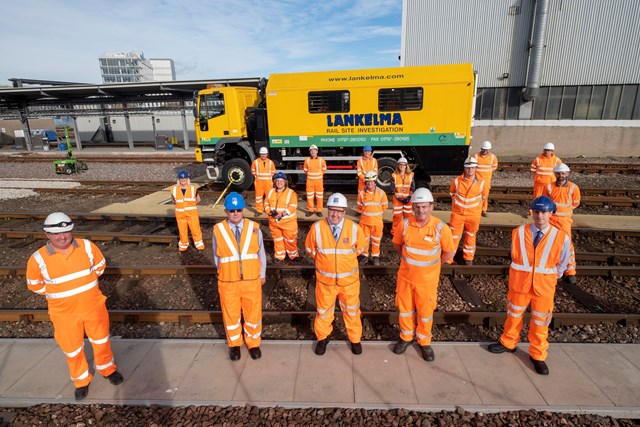Waverley’s points in post 89 above seem to be presented to prove nothing should be done at all about what he says is a stretch of the WCML where in his own words it is incredibly difficult to get an unchecked path through.
Unless he is suggesting the situation be left as it is for all time you have to start somewhere.
Getting trains from the south on the WCML to Edinburgh at 70 mph instead of 15 mph plus a painfully slow approach control will also help WCML trains going south through Carstairs by blocking their path for(at a guess) 2 mins instead of 6 minutes.
And it also helps the train behind the Edinburgh bound service which will no longer be severely checked waiting for the tortoise to get out of its way.
Reinstating the queens curve is easily done. It saves energy, CO2 & passenger & train time. It needs no property demolition.
Waverley makes the good point that it is presently not in any ones direct interest to do it. Perhaps the new joined up railway, unless it is a PR stunt, should do it as a benefit for the railway as a whole.
You seem to think the railway network is the same as a tube network. Trains aren't queued up end to end for a free run up Beattock. Solving a 'problem' doesn't always solve anything.
Grade separating a single junction somewhere on the network may help make timetabling that bit easier, so you can squeeze out an extra train somewhere else, but at the end of the day, you can only run so many trains.
Every train has a path. Each path is set, non negotiable, and reexamined once every six months. Outside of London, there usually aren't many paths.
Most of the railway network in the UK sees fewer than two trains per hour in each direction. The Carstairs to Slateford line sees on average three in each direction, including freights. Sure, a train has to wait at Haymarket for an extra five minutes on its way in but who cares really, the next train behind it is thirty minutes back at that point.
By making the network simpler, removing single lead junctions and smoothing out speed profiles, what you do is remove capacity constraints. But as I said, that might not result in more trains. It might mean that trains don't have to stop and wait somewhere, it might mean that two trains cross a junction in a parallel move, it might mean a freight train has a clear run at a long bank.
Om the west coast main line, there are between 2 and 4 tph each way. Fast passenger gets up Beattock in 6 minutes, slow freight gets up in 22 minutes, rinse and repeat. The times that these trains meet and overtake are determined by the locations of loops and the time of takes them to get up the hill.
Most of the railway interventions you could make on this network in the next five years wouldn't actually solve very much on their own. They need supporting schemes or new stock or wiring or signalling ect. If you solve Carstairs, sure, congratulations but all you've done is smooth out the speed profile and make it slightly easier to clear a late train out of the way.
Carstairs isnt a priority. Many people on this thread have told you it isn't a priority. I could give you a lost of interventions around Carstairs that would genuinely help improve capacity on that line, but reopening queen's curve just isn't one of them*. It's not important enough. I found your reply disingenuous on that point, you can look and see why it shouldn't be done until countless other things have been done.
I spent a long professional career telling politicians or interest groups why a certain special project just wasn't worth it. I had to work with the operational railway and made several decisions having to choose between equally important projects. If I had to choose between reopening queen's curve or any of the ones I'd cancelled, I wouldn't go for the former.
Try asking one of the many well informed people on here about a lost of projects they'd see as important. I'm sure you'd find many useful suggestions up there. Personally I've spent many hours waiting for the crawl at Carstairs, and I'd love it solved as much as you, but if you read my earlier message properly you'll see it's telling you why it's not as helpful as you believe it is.
*Potential improvements.
Grade separation of Law Junction, allowing for full grade separation of freights going to Mossend.
Improved voltage on the northern ECML, and wiring of the Edinburgh sub to allow electric freights via Newcastle.
Building the almond chord, shifting some services into the north tunnel and allowing more paths into Edinburgh from Carstairs
Bypassing the Glasgow to law junction stretch for high speed trains.
Speeding up the layout at Carlisle and Preston station (done post HS2)
Fixing Crewe (done post HS2)
Grade separating Euxton Junction

